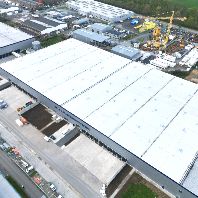The office occupier market is set for technological transformation and the convergence of HR and real estate strategies according to JLL’s predictions for 2016. John Duckworth, lead director of UK Occupier Services and Tom Carroll, director of EMEA Research identified three key trends that will influence the office property market in the next twelve months:
HR and real estate strategies converge
HR and real estate objectives will increasingly converge in 2016. Access to talent will become an even more important driver of corporate real estate and location strategy. Despite headline unemployment at stubborn highs in some European markets (notably Greece, Spain, France and Italy – where the unemployment rate is elevated above the EU average) a range of industries and geographies report skills and labour shortages. This talent paradox is driving increasing competition for highly skilled labour, with companies becoming much more forensic in their analysis of talent clusters. Building and workplace design is fast emerging as a critical tool to support broader strategic objectives around talent attraction and retention. 2016 will see more companies focus on improving employee experience and ‘wellness’ as a way to improve productivity and performance.
Technology will transform organisations and their real estate in 2016
Technology and the future of work are further factors reshaping occupier demand for real estate. Connected to the generational changes reshaping the profile of the workforce, the ubiquity of digital technology is having a profound impact on real estate. Firstly the weighting of tech, media companies and disruptive digital industries has dramatically increased in global office markets. However more broadly, emerging technology is poised to impact building design and function, CRE management and even the procurement of workers. Data and analytics led real estate and more flexible working solutions to support co-working, third space and human cloud concepts will all enter the mainstream of corporate real estate strategy in 2016.
Own vs lease under the spotlight in 2016
With corporate disposals of owned assets at multi-year highs, 2016 will see more companies re-evaluate their own versus lease strategies. Across Europe, 2014 saw the highest number of corporate disposals in eight years with momentum continuing into 2015 with the volume of disposals for the year to end Q3 up 13% y-o-y. With over 40% of real estate executives reporting increasing pressure from leadership to review own vs lease strategies and explore capital raising, we expect disposal activity to remain elevated. After an 8 year wait, companies will also need to absorb the impact of lease accounting changes on their portfolios in 2016. In the long term these apparently innocuous changes could have profound impacts for the industry; in 2016 the process of planning and risk mitigation will begin.
Source: JLL















